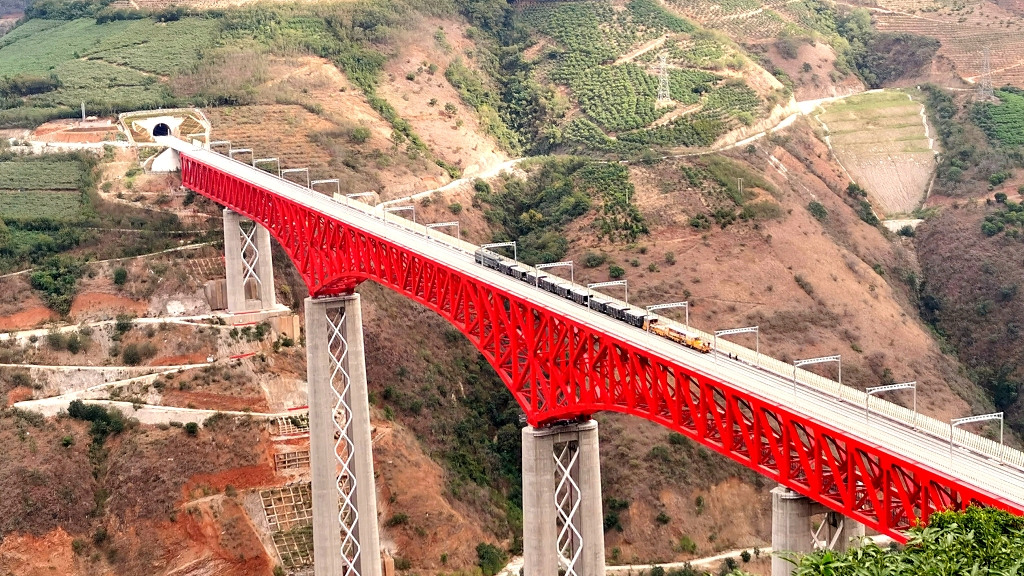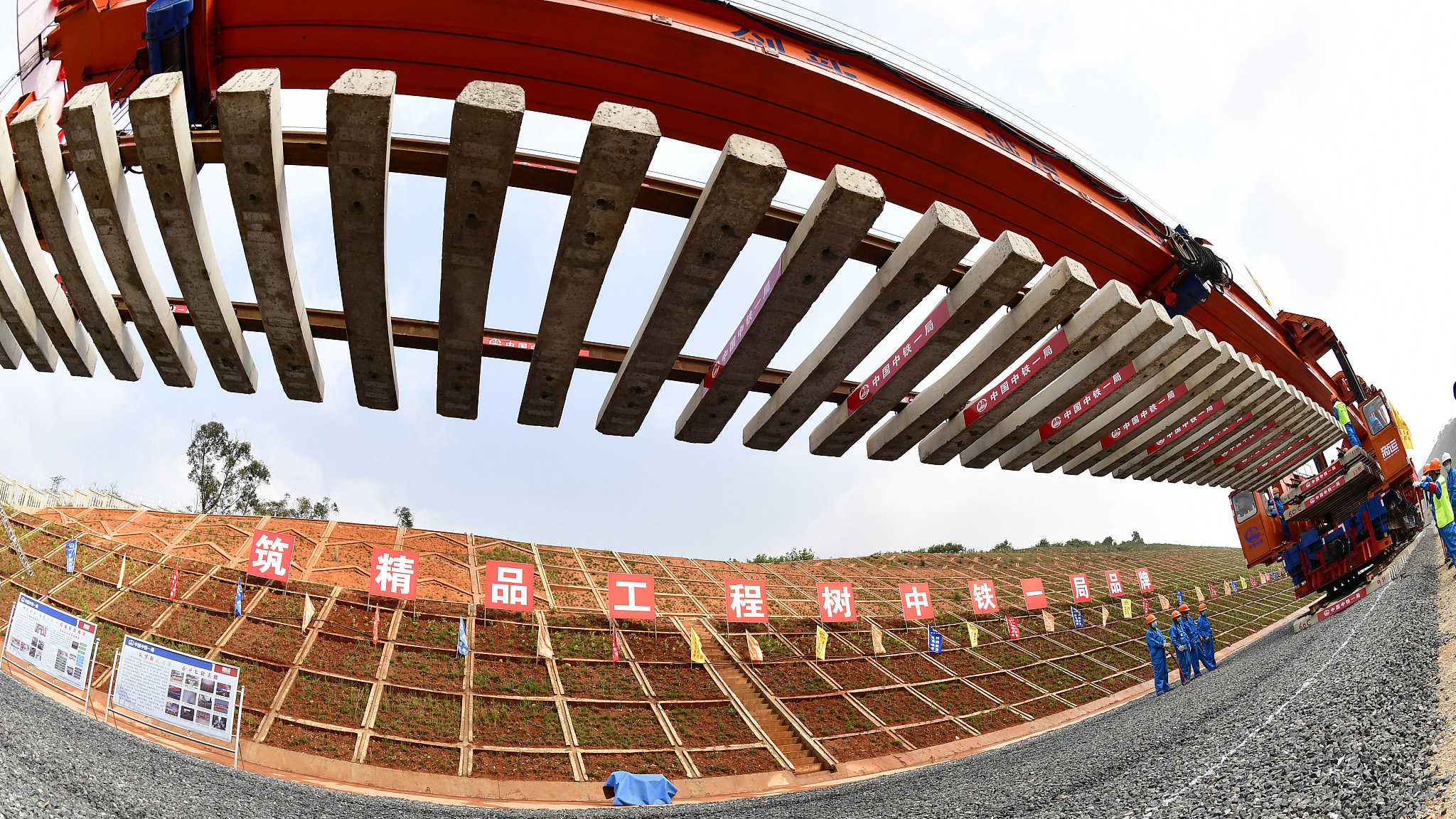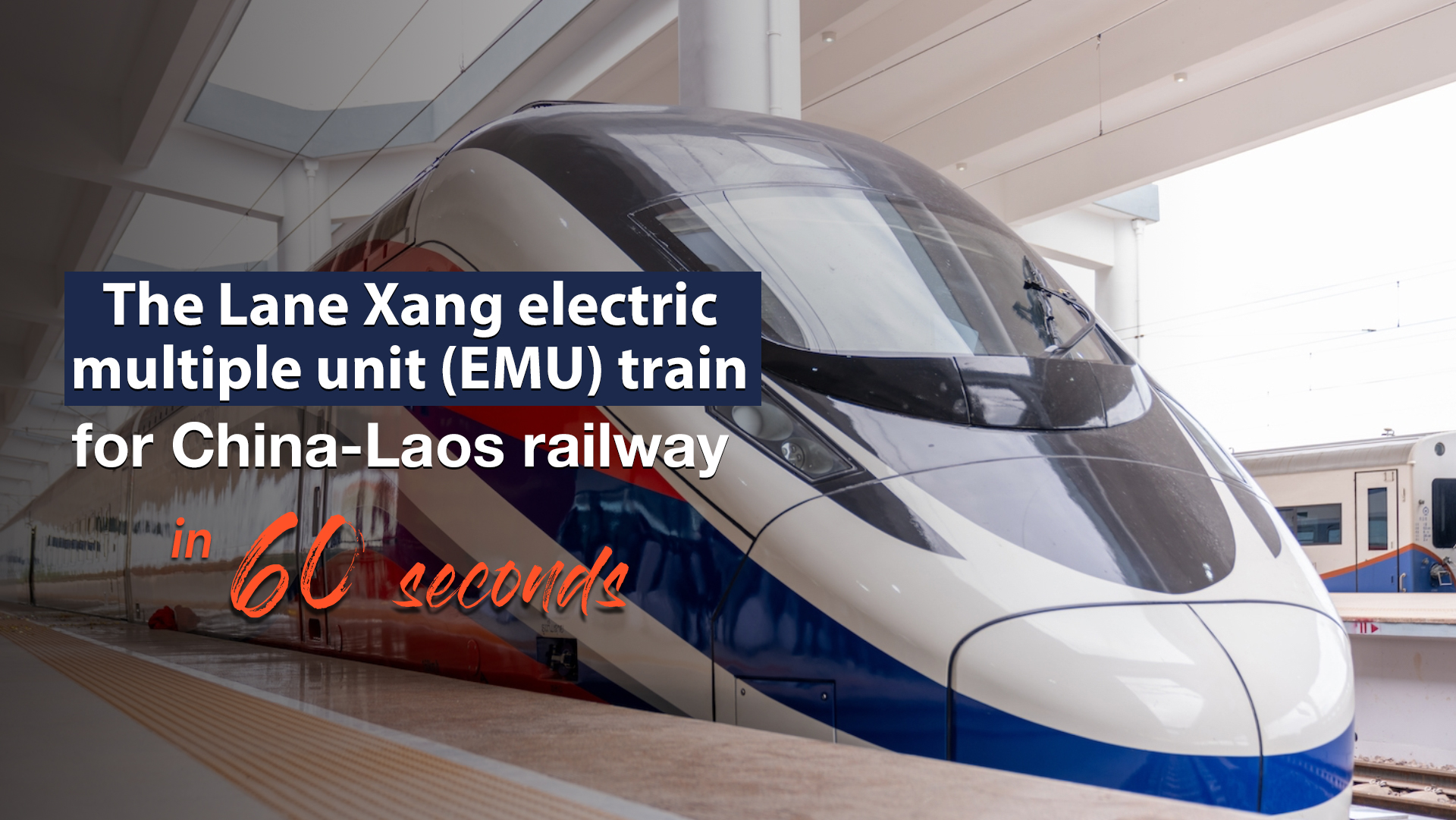
The Yuanjiang Railway Bridge along the China-Laos railway. /CFP
The Yuanjiang Railway Bridge along the China-Laos railway. /CFP
The China-Laos railway, due to start operation in early December, is special not only because it runs through two nations, but also for its massive inclusion of tunnels and bridges.
The rail extends through China's southwestern Yunnan Province, which connects the world's highest plateau with the eastern plain. The province is filled with mountains and valleys which, naturally, are not ideal for rails.
In fact, more than 80 percent of the rails on the Chinese side are laid in tunnels and on bridges.
00:49

As you may have learned from many other sources, the Chinese engineers are experienced with large infrastructure projects. How did they build the hundreds of kilometers of tunnels and bridges?
Take the example of the Anding Tunnel – the largest along the railway. It took a whole four years for workers from the China Railway Group to build the 17,476-meter tunnel. When they first started drilling back in 2016, it was a nightmare.
"In the early times," Wang Haifeng, project manager of the railway's Yuxi-Mohan part, told China News Service. "A total of 50,000 cubic meters of water ran out from the underground every day."
"The water flow was so powerful that it sprayed as far as 20 meters," he added.
The engineers held meetings after meetings to come out with a plan to ensure safety during the drilling and eventually decided to build double supporting layers to strengthen the tunnel, which was a new way of engineering for them.

Workers and engineers celebrate the drill-through of the 17476-meter Anding Tunnel, the longest along the China-Laos railway, in Yuanjiang Hani, Yi and Dai Autonomous County, southwest China's Yunnan Province, November 28, 2020. /China Railway Group
Workers and engineers celebrate the drill-through of the 17476-meter Anding Tunnel, the longest along the China-Laos railway, in Yuanjiang Hani, Yi and Dai Autonomous County, southwest China's Yunnan Province, November 28, 2020. /China Railway Group
To build such a long railway also required the wisdom of Laos workers, who learned from their Chinese counterparts and vice versa.
"All my techniques on building this railway were learned from master Zhang," a land surveyor with a Chinese name Luo Shunfa told China Central Television. "My salary got raised after I mastered my own skill. And I can teach my colleagues."
"At the beginning, Luo could set up the equipment in more than a minute," said Zhang Li, a surveyor from the China Railway Construction Group. "But he's interested in the skill and practiced a lot. Now he can do it in just 10 seconds, which qualifies him as a great surveyor."
Many workers and engineers told Chinese media that they felt satisfied building the railway because of the good salary and the fact that they were building a project that could benefit their own people.
The train car is designed to run at 160 kilometers per hour. The cars look modern thanks to the bullet-shape appearance and the electric multiple unit properties.
01:13

In a recent trial run, the cars were painted green, which reminded some reporters about the Hulk in Marvel Comics. The powerful train will be more than willing to carry the friendship between China and Laos to a better future.

